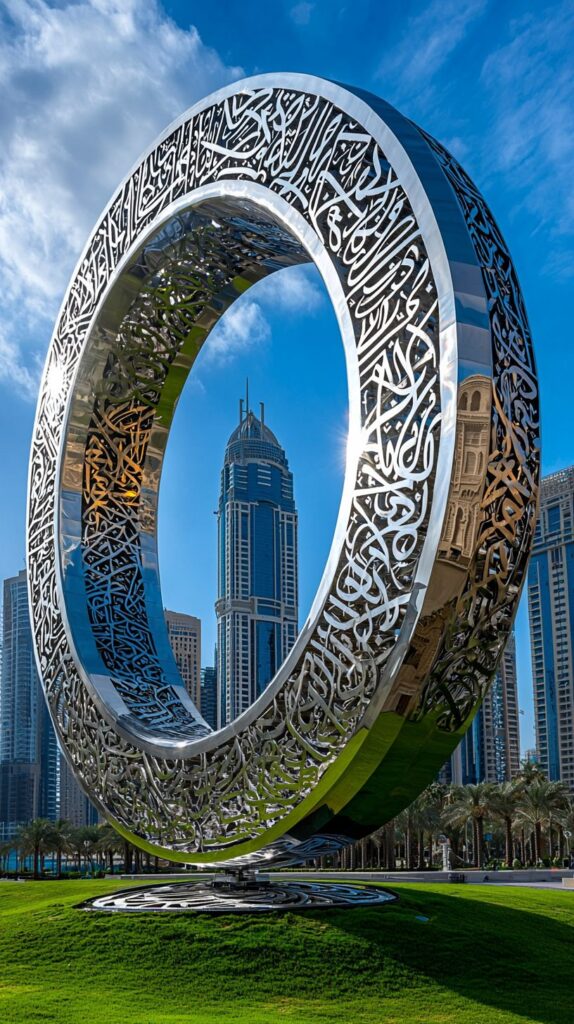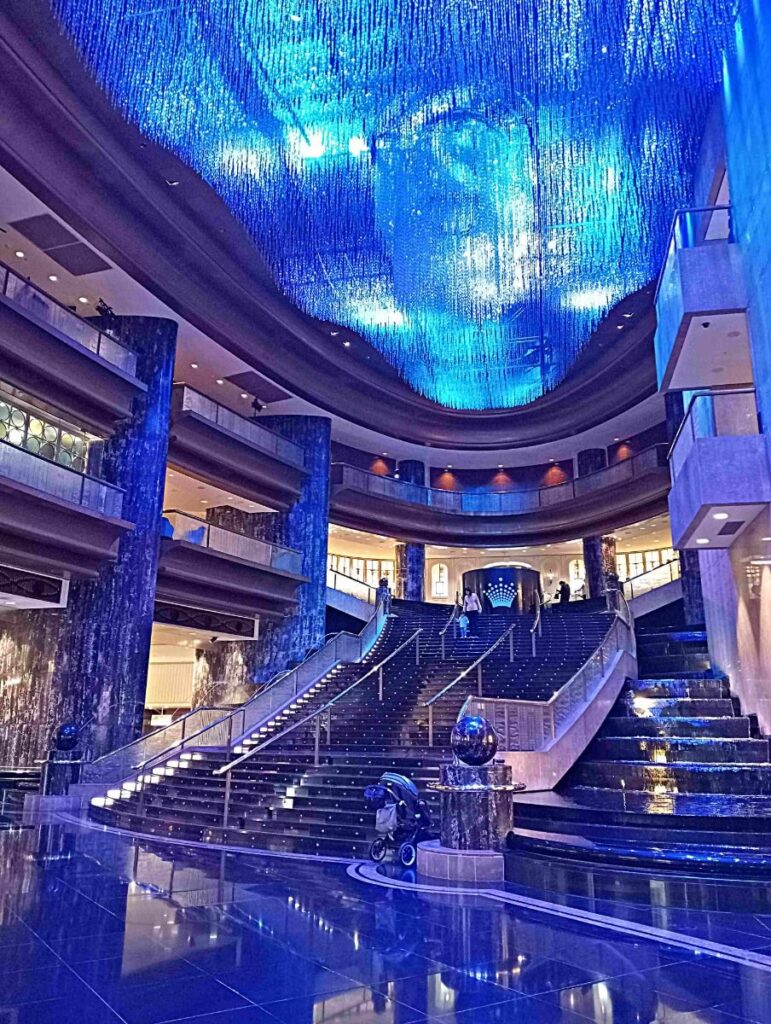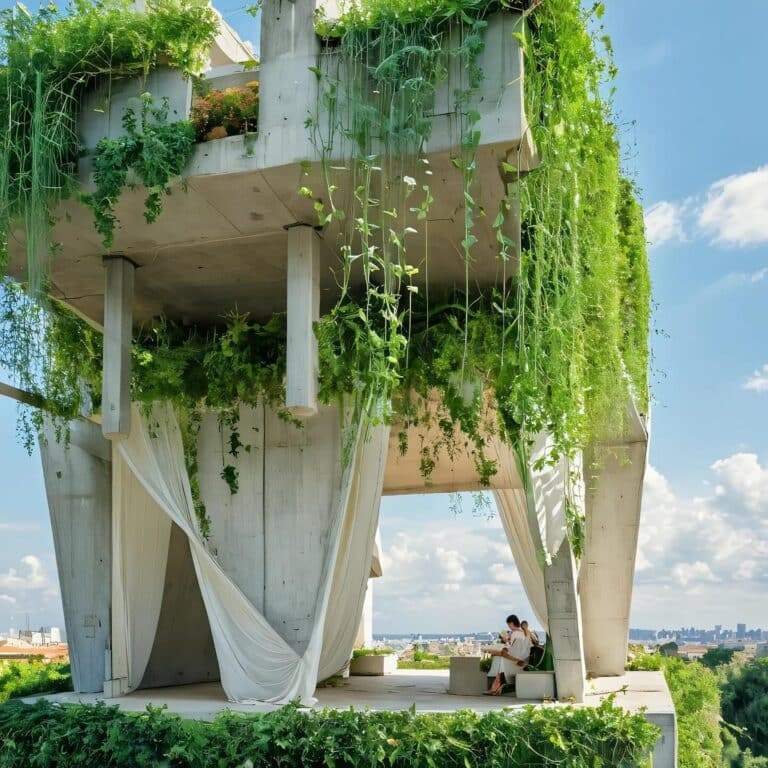Imagine standing before a building that feels like it’s been plucked from a sci fi novel. A shimmering silver ring floats above a green hill, with a void at its heart that beckons you to ponder what lies ahead. This is Dubai’s Museum of the Future, not just a structure but a masterpiece of architecture. It weaves together human ingenuity, cultural depth, and a bold vision for sustainability. In this article, we’ll take you on a journey through this extraordinary landmark, diving into its architectural brilliance and its role in redefining how we build cities.

A Vision Bridging Past and Future
The first time you lay eyes on the Museum of the Future, it stops you in your tracks. Its toroidal shape resembles an eye gazing into the unknown. This isn’t just a design choice; it’s a story. The circular form symbolizes humanity’s unity. The green hill it rests on roots it to the earth, while the central void represents the boundless possibilities of tomorrow. Together, these elements — circle, hill, and void — create a powerful narrative. We are grounded in our history, yet always reaching for what’s next.
The building’s exterior is more than a sleek surface; it’s a canvas. Adorned with elegant Arabic calligraphy featuring inspiring words from His Highness Sheikh Mohammed bin Rashid Al Maktoum, like The future belongs to those who can imagine it, design it, and build it, it blends cultural heritage with forward-thinking ambition. Crafted in a bespoke typeface by artist Mattar bin Lahej, the calligraphy adds a layer of authenticity. Thus, making the museum a bridge between tradition and tomorrow.

Engineering That Defies Gravity
A Structure Without Limits
Rising 78 meters and spanning 30,548 square meters, the Museum of the Future boasts seven floors free of internal columns. How does it stand? The answer lies in its cutting-edge diagrid structure, a steel framework that distributes loads with remarkable efficiency. This feat, which earned the Tekla Global BIM Award, allows for vast, flexible interior spaces. These are perfect for interactive exhibits and global conferences.
Table 1: Architectural Specifications of the Museum of the Future
| Feature | Details |
|---|---|
| Height | 78 meters (255 feet) |
| Total Area | 30,548 square meters |
| Floors | 7 floors, column-free |
| Structure | Steel diagrid system |
| Facade | 1,024 stainless steel panels, illuminated with 14,000 meters of LED lights |
| Facade Installation | 18 months |

Revolutionary Design Techniques
Behind this awe-inspiring design is the power of Building Information Modeling (BIM), used by Killa Design under the supervision of Buro Happold. BIM enabled precise planning, integrating structural, mechanical, and electrical systems within the complex steel framework. The facade, made of 1,024 stainless steel panels, was crafted with robotic arms. This meticulous process took 18 months. Each panel, composed of four layers, was carefully installed to align the calligraphy with the structural nodes. This ensures both beauty and stability. This precision led Autodesk to call it one of the world’s most complex buildings.

Connecting to the City
Perched on a landscaped green hill, the museum seems to float above Dubai’s metro line, creating a striking visual effect. The hill isn’t just aesthetic; it adds greenery to the heart of Sheikh Zayed Road. The museum connects to its surroundings via two pedestrian bridges. One stretches 69 meters to Emirates Towers, and another, 212 meters, to the Emirates Towers Metro Station. These links make the museum a vibrant hub in Dubai’s urban fabric.
Sustainability That Shapes the Future
The Museum of the Future isn’t just a symbol of architectural innovation; it’s a model for sustainability. Awarded LEED Platinum certification, the highest rating for green buildings, it runs on 4,000 megawatts of solar energy from a dedicated plant, thereby eliminating reliance on fossil fuels. Its surrounding garden, home to 80 plant species, is watered by a smart irrigation system that conserves resources. Electric vehicle charging stations further support a cleaner future.


Table 2: Sustainability Features of the Museum of the Future
| Feature | Details |
|---|---|
| Environmental Rating | LEED Platinum |
| Energy Source | 4,000 megawatts of solar energy |
| Irrigation System | Smart, automated irrigation for the garden |
| Clean Transport Support | Electric vehicle charging stations |
| Biodiversity | 80 plant species in the surrounding garden |
An Immersive Interior Experience
Step inside, and the museum transports you to another world. Its interiors house six interactive exhibits, a conference hall, and retail spaces. Each floor offers a unique experience: from a virtual space journey mimicking a space station, to a lab recreating rainforests in vivid detail. A Bio Library showcases 2,500 genetic code models, while the Future Heroes section engages kids with games designed to build confidence and creativity. The Our Future Today exhibit highlights cutting-edge tech like drones and robotics. It makes you feel like you’re living in 2071.

A Global Impact That Inspires
Opened on February 22, 2022, after six years of construction at a cost of AED 500 million, the museum welcomes visitors daily from 10 AM to 6 PM. It aims to attract a million visitors annually, serving as a global platform for innovation. Hosting conferences on AI and technology, it fosters dialogue with international partners. Its exhibits are updated every six months to reflect the latest scientific breakthroughs, thereby keeping it a living lab for future ideas.

A Call to Architects
For architects, the Museum of the Future is a masterclass in pushing boundaries. Its bold design, powered by BIM and diagrid systems, shows that architecture can be more than buildings; it can be a vision that inspires the world. It’s a challenge to think beyond convention, blending beauty with function, and designing structures that solve today’s problems while anticipating tomorrow’s possibilities.
ArchUp continues to track transformations in the construction industry, spotlighting projects that embrace innovation and reshape the urban landscape. The Museum of the Future is proof that when imagination meets dedication, the impossible becomes reality.






